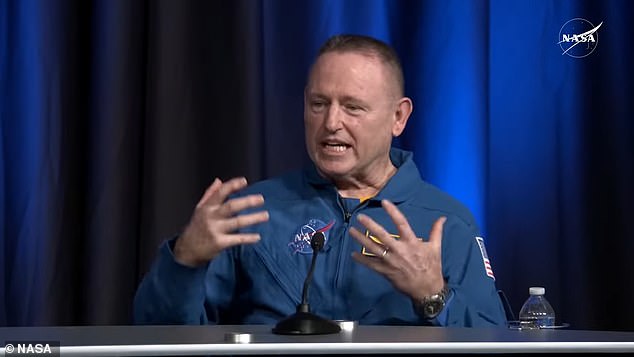
NASA Astronaut’s Untold Strategy for Enduring 286 Days Marooned in Orbit
NASA Astronaut Butch Wilmore’s Faith Sustained Him During 286-Day Space Stranding
NASA astronaut Butch Wilmore, who spent 286 days aboard the International Space Station (ISS) due to spacecraft malfunctions, leaned on his faith to stay grounded during the unexpected ordeal. Wilmore and crewmate Suni Williams returned to Earth on March 18 via SpaceX’s Dragon capsule after their initial eight-day mission aboard Boeing’s Starliner stretched into a nine-month stay.
Virtual Worship in Orbit
Despite being 250 miles above Earth, Wilmore maintained a spiritual connection by attending virtual services at Providence Baptist Church in Pasadena, Texas, where he’s been an elder for 17 years. “The Word of God continually infilling me—I need it,” Wilmore said during a press conference in Houston. He led devotionals, joined virtual hymn-singing sessions, and tuned into a Tennessee church’s services weekly. “Even if it wasn’t fellowship up close, I still needed it,” he added, calling the experience “invigorating.”
[Image: Wilmore inside the ISS, smiling while holding a tablet displaying a church service.]
Caption: Wilmore attended virtual church services weekly, calling worship “vital” during his extended mission.
Political Controversy and Resilience
The delay in their return sparked claims from Elon Musk and Donald Trump that the Biden administration had “abandoned” the astronauts for political reasons. Musk alleged his offer to retrieve them earlier was declined, while Trump demanded their swift return during his campaign. Wilmore, however, dismissed the narrative, stating he trusted NASA’s decisions: “I have no reason not to believe anything they say because they’ve earned my trust.” Both astronauts emphasized they never felt “stranded” or “abandoned,” framing the extension as a chance to contribute more to ISS research.
[Image: Wilmore and Williams during a press conference, smiling in NASA flight suits.]
Caption: Wilmore and Williams rejected claims of being “abandoned,” praising NASA’s support.
Ownership of the Starliner Setbacks
The astronauts acknowledged shared responsibility for the mission’s challenges. Wilmore admitted he “did not ask questions [he] should have” before launch, while Williams highlighted their adaptability: “We pivoted…ready to take on the tasks.” Boeing’s Starliner faced thruster failures and helium leaks during its June 5 launch, prompting NASA to delay their return for safety reviews. Wilmore stressed the importance of learning from the issues: “Everybody has a piece in this…it’s how we improve.”
[Image: Boeing’s Starliner docked at the ISS.]
Caption: Technical issues with Boeing’s Starliner extended the astronauts’ stay by months.
Homecoming and Health Recovery
After splashing down in the Gulf of Mexico, Wilmore faced physical challenges readjusting to gravity. His daughter Daryn, 19, shared on TikTok that he struggled with muscle weakness, joint pain, and inner-ear imbalances—common after long space missions. Astronauts often require months to regain strength post-mission, but Wilmore remained optimistic, focusing on family and the broader goals of space exploration: “It’s not about me…it’s about our national goals.”
[Image: Wilmore reuniting with his family post-landing, hugging his daughter.]
Caption: Wilmore’s return included emotional reunions and physical recovery challenges.
Legacy of Perseverance
Both astronauts underscored the mission’s significance for future spaceflight. “We’re test pilots—we’re gonna test this spacecraft,” Wilmore said, framing setbacks as growth opportunities. Williams added, “We’re just happy to be part of the process.” Their resilience and teamwork, bolstered by faith and camaraderie, highlighted humanity’s capacity to thrive even in the harshest environments.
[Image: Wilmore and Williams floating inside the ISS, conducting experiments.]
Caption: The duo contributed to ISS research during their extended stay, embodying resilience.
As NASA and Boeing review Starliner’s issues, Wilmore and Williams’ experience stands as a testament to the power of adaptability, faith, and collaboration in overcoming the unexpected.


